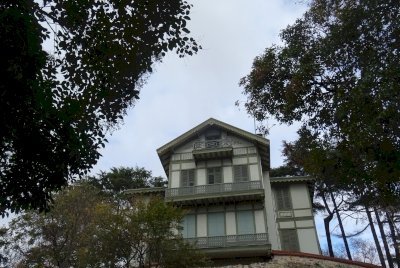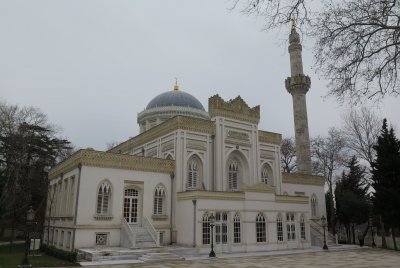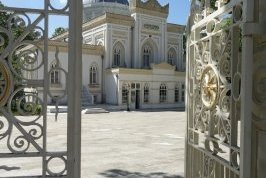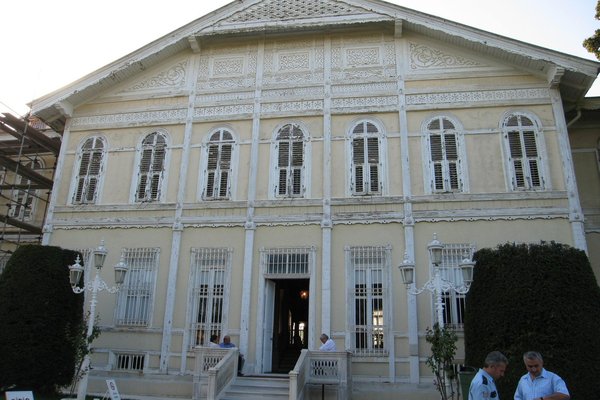Turkiye
Yildiz Palace Complex
The Yıldız Palace Complex in Istanbul was the seat of the Ottoman government during the late 19th and early 20th centuries.
It shows the adaptation of European-style architecture and landscape design. It is a large complex with public buildings, pavillions and gardens. Its on-site imperial porcelain factory was based on traditional Turkish ceramic tile making.
Site Info
Official Information
- Full Name
- Yıldız Palace Complex (ID: 6044)
- Country
- Turkiye
- Status
-
On tentative list 2015
Site history
History of Yildiz Palace Complex
- 2015: Added to Tentative List
- Added to tentative list
- Type
- Cultural
- Criteria
Links
- UNESCO
- whc.unesco.org
All Links
UNESCO.org
- whc.unesco.org — whc.unesco.org
News Article
- July 20, 2024 hurriyetdailynews.com — Yıldız Palace opens doors after 6 years of restoration
Community Information
- Community Category
- Secular structure: Palace
Travel Information
Recent Connections
News
- hurriyetdailynews.com 07/20/2024
- Yıldız Palace opens doors after 6 …
Community Reviews
Show full reviews
This is a kind of Stoclet house that welcomes you with guns.
It may have been the fascination for the prohibited or the downright incomprehensible that led me to spend a whole morning exploring this part of Beşiktaş during my Turkish week in the first half of December 2022. This was a neighbourhood that in my previous (2012) trip to İstanbul/Turkey I had completely neglected, but on this dark, cloudy but rather mild late-autumn day I enjoyed the greenery and the more ample and aristocratic atmosphere with respect to Unkapanı/Cibali/Fener (on the southern shore of the Golden Horn), where I had come from by ferry.
This point has to be made clear: unfortunately for Zoë and many others, this site, or at least the more relevant parts thereof, is totally out of reach, closed for visitors now and for any foreseeable future. A source of confusion are the many descriptions, even very recent ones, that can be found on the web, which state that the palace museum is open, or the Şale (= fr. chalet) pavillion, or both, or maybe the carpentry and/or tile and porcelain museum, while others say that it is closed, but no explanation is given (for my old, 2009-ish guidebook the whole area was still accessible and open to visits). Probably the most authoritative source is the directorate of national palaces stating that the chalet pavillion is closed for restoration, but this is also misleading: from other sources and speaking with …
Keep reading 0 comments
I should have done my research before heading all the way north to find it closed as mentioned previously, and only the outside of the mosque was available for a photo (don't find it special and is it even part of the nomination?). I approached the barriers and the police told me it is closed for renovations. Then I figured I can take a photo from the outside but no… Not allowed.
So just to pad the review with info for the future, take the T1 tram to the end and then switch to one of the many buses stopping right in front of it (Google map is your friend there but apparently doesn't know the palace is closed!) Not much walking up the hill is required. There is a playground nearby if you want to ditch the kids for a bit ;)
Will surely return to Istanbul one day to see.
Keep reading 0 comments
On my last day in Istanbul I made my way to the Yildiz Palace in Besiktas. It is currently (2018) undergoing renovations and not accessible to the public. The only exception is the mosque next to the entry.
I was all alone when I entered the mosque and it was quite impressive. The striking feature here is how 19th century Europe is creeping into the old Ottoman style. It still follows the architectural template set by Sinan centuries earlier, but makes use of 19th century building technology and European fashion.
OUV
I am hard pressed to fully judge the OUV seeing I was only able to visit the mosque. Personally, I would prefer a serial nomination of the Ottoman palaces of Istanbul, specifically Dolmabahce Palace.
Getting There
The palace is only connected by bus. Neither tram nor subway will take you there directly. I ended up walking 30min or so from the end of tram line at Kabatas passing the Dolmabahce Palace along the way.
Keep reading 0 comments